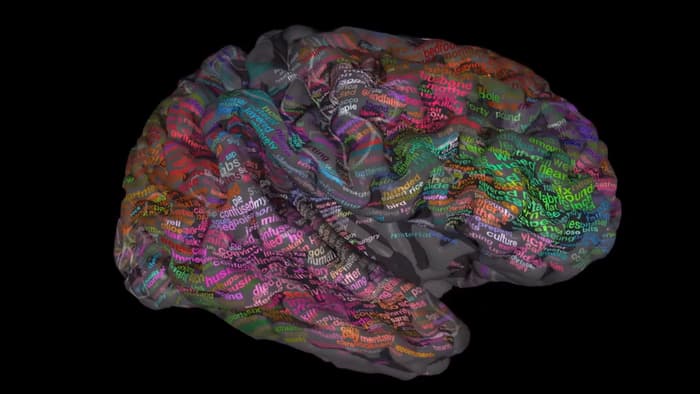
Recently, we've seen some big developments in our understanding of exactly how the brain works, with scientists at Ohio State University working to pinpoint where in the brain we process facial expressions. Now, researchers from the University of California, Berkeley are tackling another big question – that of how we process language, creating a map that describes how the brain organizes words.
The new study involved seven participants listening to stories from the Moth Radio Hour – a public radio show – for two hours while remaining motionless inside an MRI machine. The blood flow in the patients' brains was measured as they listened with their eyes closed. That data then matched to time-coded transcripts of the stories, and finally through a word-embedding algorithm, scoring words according to how semantically similar they are to one another.
All that data resulted in a thesaurus-like map of the brain, with words arranged across the hemispheres of the brain, grouped under various headings such as tactile, visual, social or emotional.
Studying the map reveals that at least a third of the brain's cerebral cortex is involved in processing language. The results also revealed that while everyone's brain is, of course, different, patients shared broadly similar language maps, with types of word arrayed in a roughly similar manner across the brains of the different participants.
The knowledge of how the brain organizes words by meaning might actually have practical applications, possibly coming to the aid of people who have difficulty speaking, such as motor neuron disease patients or stroke victims.
Using the knowledge from the study, it's possible that doctors could one day track brain activity of patients that are unable to communicate, using the map to determine what the person is trying to say.
Looking forward, the researchers plan to increase the patient sample size in order to better understand the nuances of how we process words.
"Although the maps are broadly consistent across individuals, there are also substantial individual differences," said senior study author Jack Gallant. "We will need to conduct further studies across a larger, more diverse sample of people before we will be able to map these individual differences in details."

 Previous page
Previous page Back to top
Back to top







